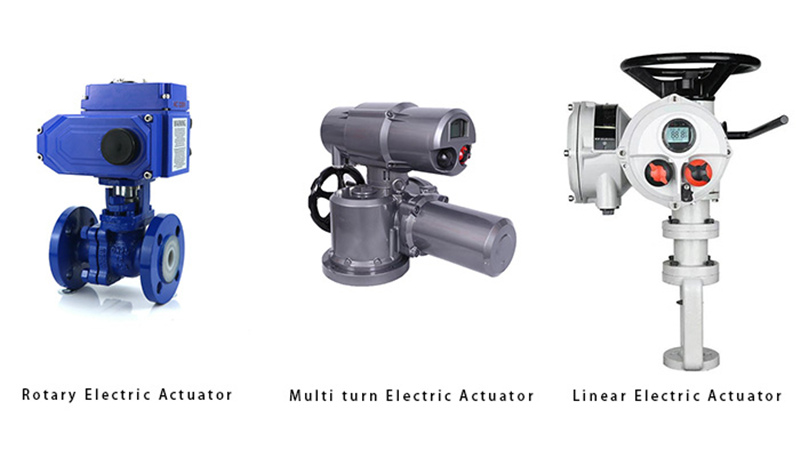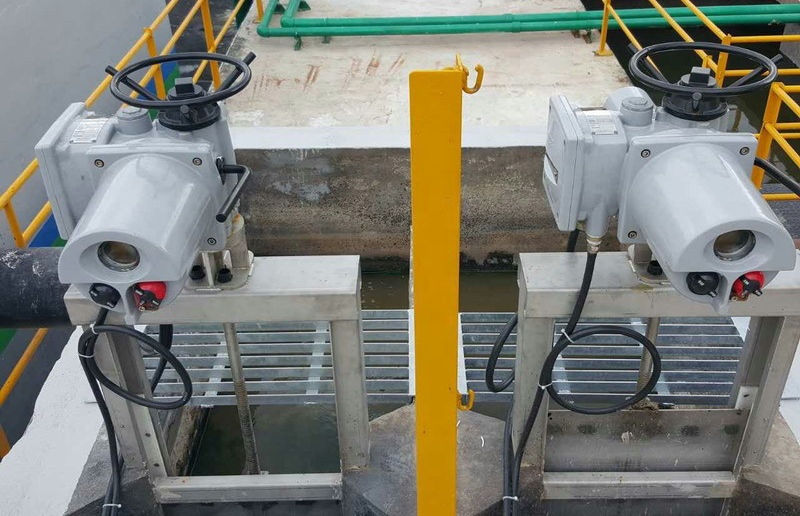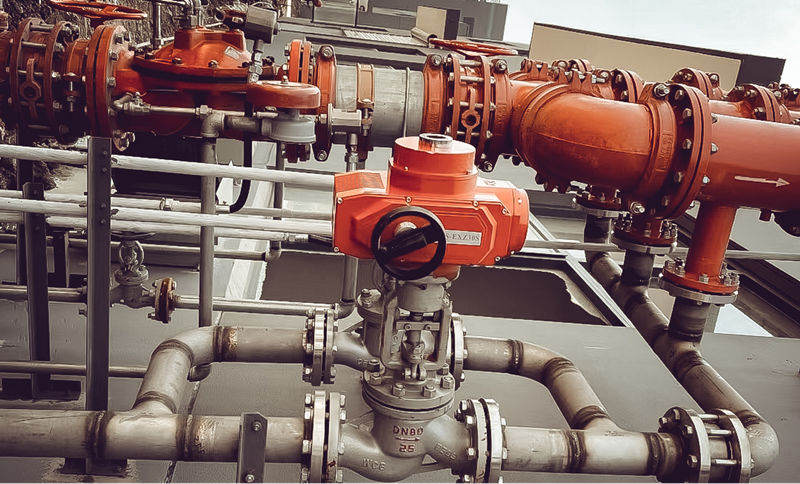How to choose an electric actuator?
Electric actuator is an indispensable part of automatic control system and a very important driving device in industrial process control system. It uses electric energy as power, accepts a certain signal and amplifies its power, and converts it into the corresponding angle or linear displacement of the output shaft to push various control mechanisms to complete the operation process. It has the characteristics of easy access to power, simple installation and debugging, etc. It can be used on many industrials such as food and beverage, water treatment, oil and gas, mining industry etc..
1.Basic introduction to electric actuators
There are many types of electric actuators, mainly in the following two classifications.
① According to the different movement forms of the actuator, it can be divided into 3 categories.
|
Serial number |
Actuator type |
Movement angle |
Main application |
|
1 |
Rotary |
Corner <360 degrees |
Suitable for ball valves, plug valves, butterfly valves, etc. |
|
2 |
Multi-turn |
Corner>360 degrees |
Suitable for gate valve, globe valve, etc. |
|
2 |
Linear |
Linear motion |
Suitable for single- seat control valve, double-seat control valve, etc. |

② According to the different functions of the valve, it can be divided into two categories: switch type and adjustment type. The main difference: the switch type generally realizes the open or close control of the ball valve, and does not require precise control of the medium flow. The regulating type not only has the structure of the switch type, but also can accurately adjust the flow of the medium.
2.Electric actuator structure and working principle
The main structure of the electric actuator is mainly composed of three parts: servo motor, mechanical deceleration and position transmitter.
① Reduction box includes base, gear, hand wheel, turbine worm, output shaft, coupling, etc.
② Motors include DC motors, single-phase motors, three-phase motors, variable frequency motors, etc.
③ Position transmitter, mainly to receive and output position current signal.

3.Advantages and disadvantages of electric actuators
The main advantages are:
① Easy to use the power source
② High signal sensitivity and precision, and long transmission distance, easy to control
③ Easy installation and simple wiring
④ It also has the characteristics of strong anti-deviation ability.
The main disadvantages are:
① The structure is more complex, prone to failure, and the technical level of the maintenance personnel is high.
② Too frequent adjustment will easily cause the motor and electrical components to overheat and burn out, and will also increase the wear of the reduction gear.
③ The operating speed of the actuator slower.
4.Electric actuator selection steps
Step 1: Type selection of electric actuator:
① First, select the type of electric actuator according to the type of valve required: there are many types of valves, and the working principles are different. Some realize the switch control by rotating the valve plate angle, and some realize the opening and closing switch control by lifting the valve plate. Therefore, when choosing an electric actuator, you should first look at the type of valve and which control method is needed.
② According to the production process requirements, determine the control mode of the electric actuator: whether to choose the on off type or the adjustment type.

Step 2:Determine the output torque of the electric actuator according to the torque required to open and close the valve:
It is necessary to first understand the maximum torque required to open and close the valve, and then select an electric actuator suitable for the output torque according to the torque. The torque for open and close the valves are determined by factors, for example the size of the valve diameter and working pressure etc.
Step 3: Determine the electrical parameters according to the selected electric actuator:
Because of the parameters of electric actuator manufactured from different company. But it is necessary to check their electrical parameters ( such as torque, motor power, rated current, voltage, etc.). The negligence in this regard results in the mismatch between the parameters of the control system and the electric actuator, resulting in faults such as tripping of the spacer, blown fuse, and thermal overload relay protection tripping during operation.
Step 4: Select the enclosure protection grade and explosion-proof grade according to the application.
Step 5: Choose a suitable gearbox or thrust conversion device.





